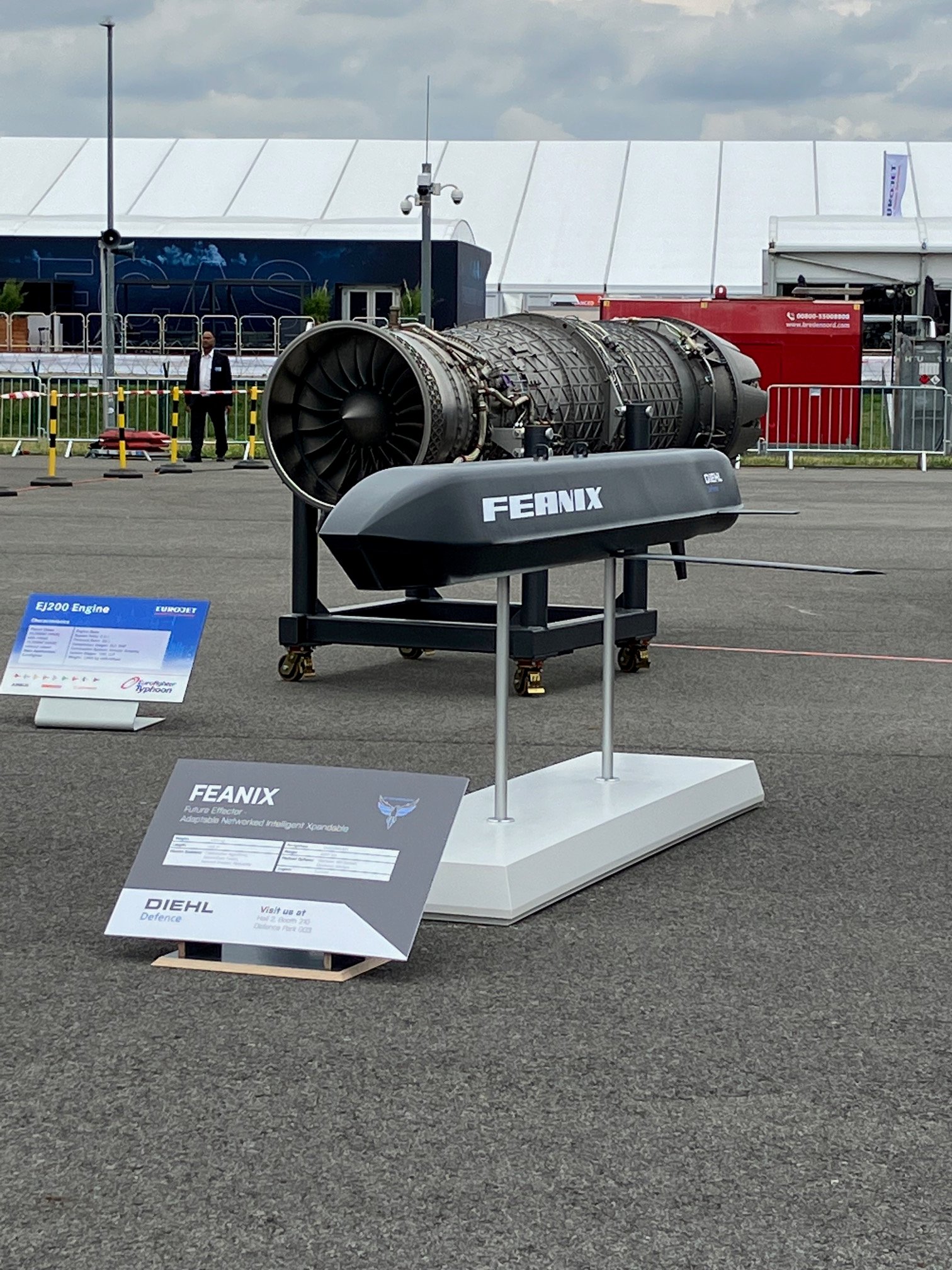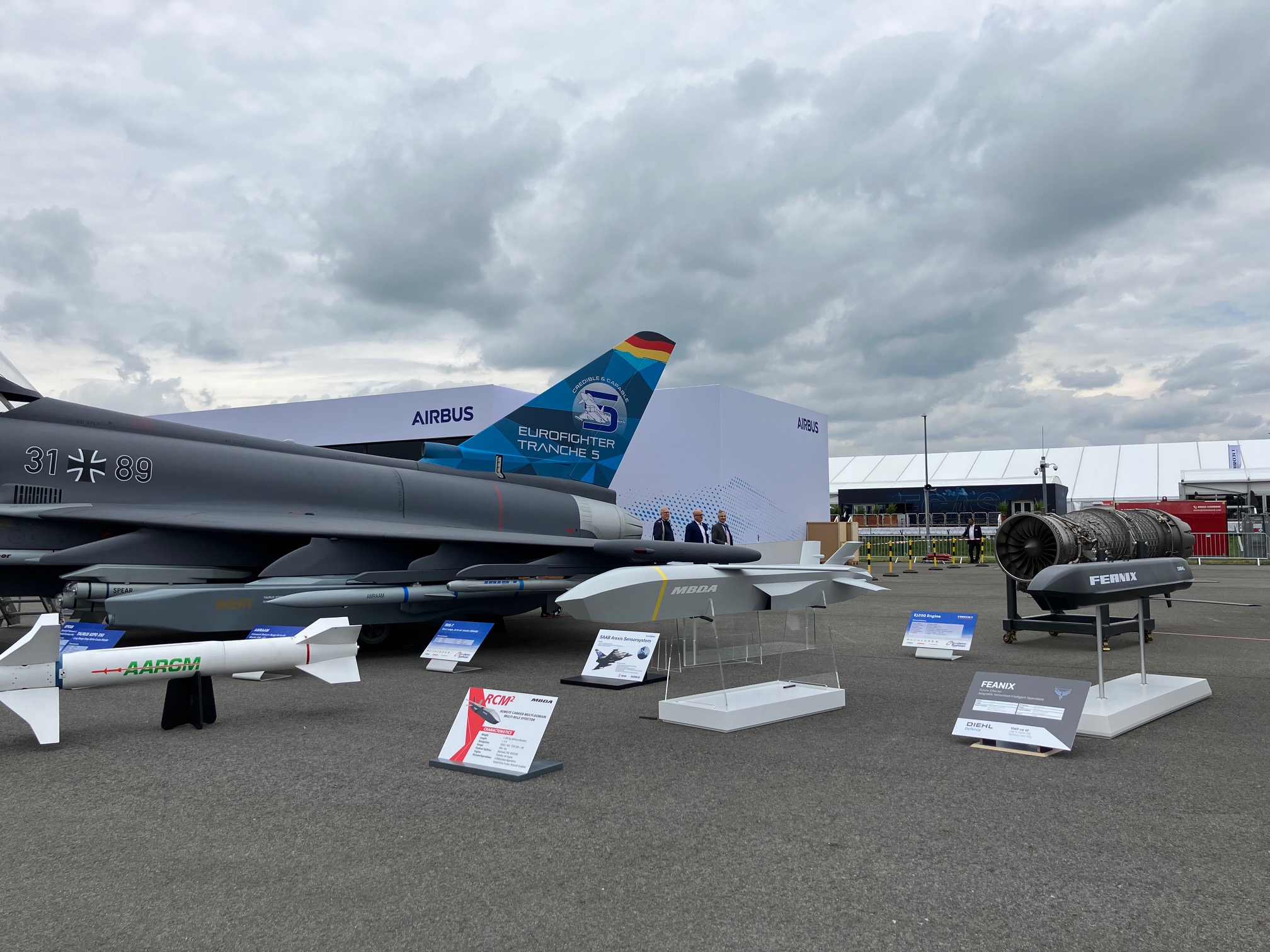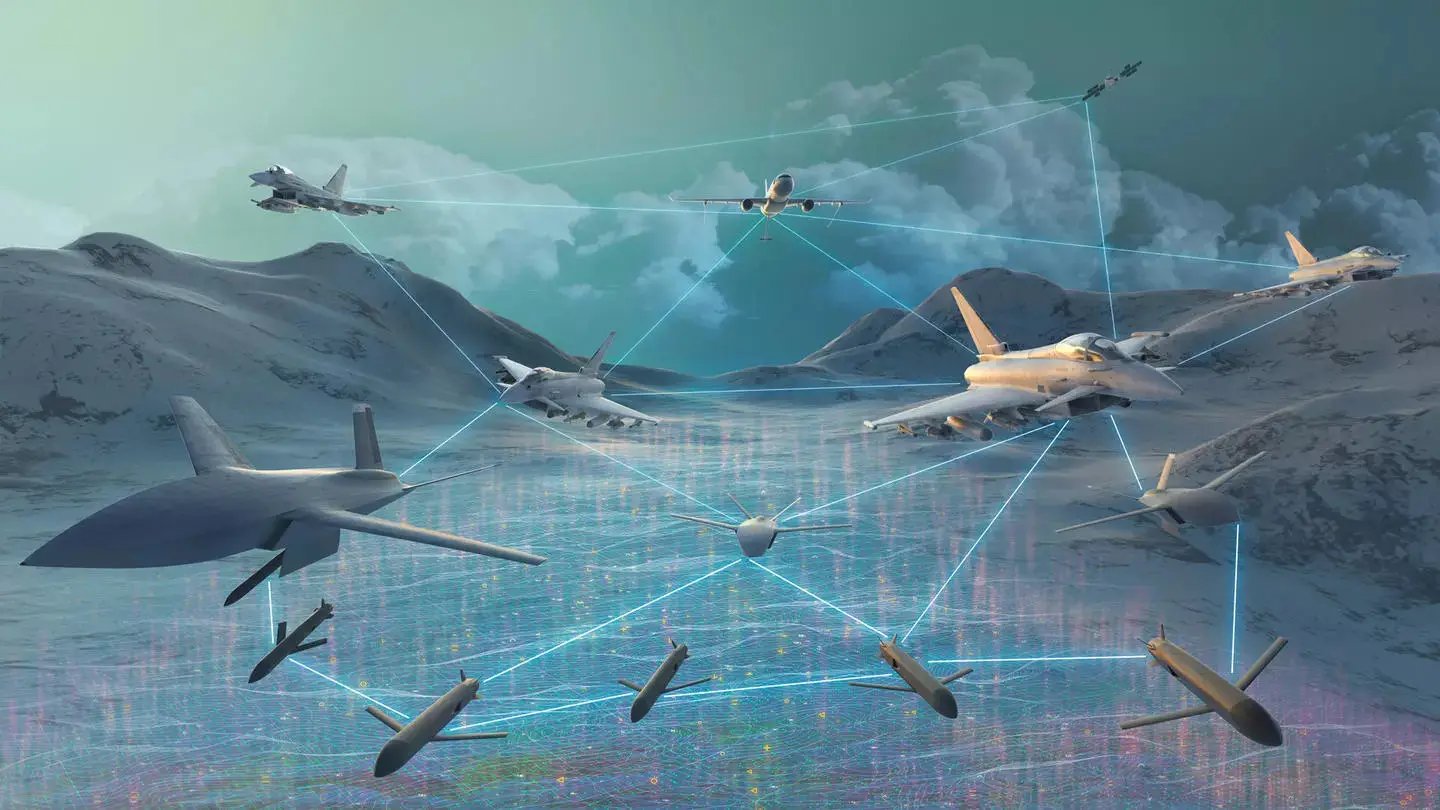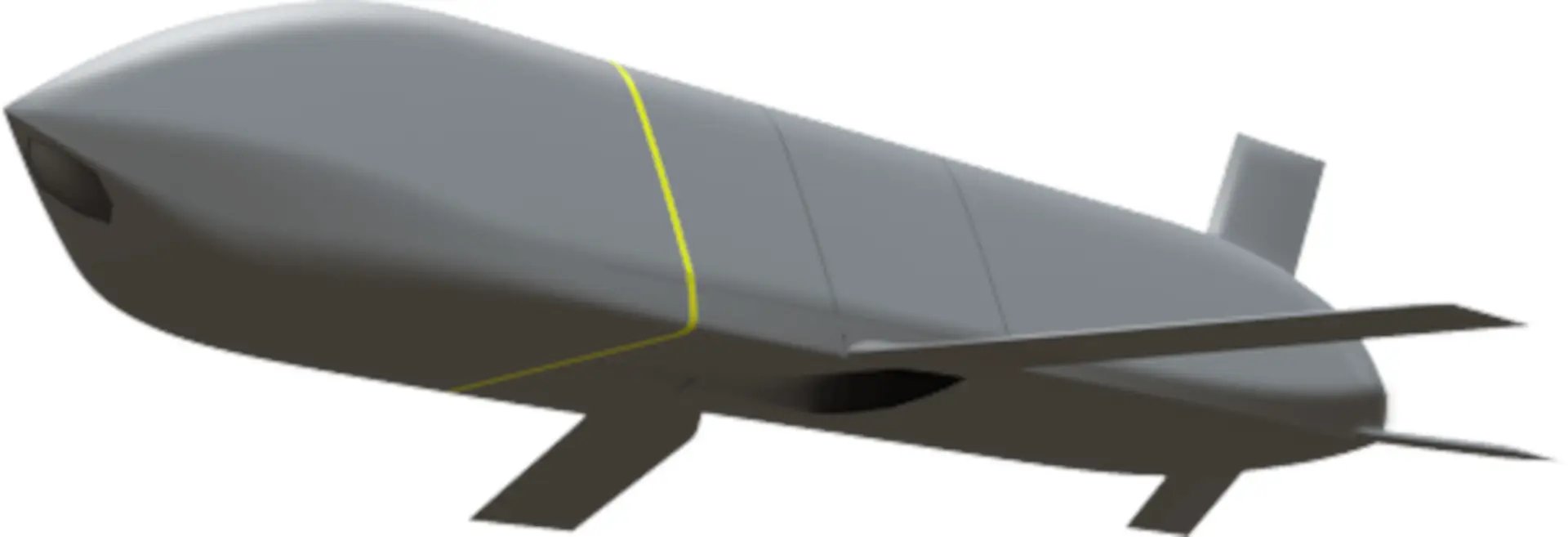German contractor Diehl Defense has unveiled a new ‘remote carrier’ — a missile-like store that can be launched from aircraft, as well as from land and sea platforms. The long-range system, known as FEANIX, which stands for Future Effector — Adaptable, Networked, Intelligent, eXpendable, is being pitched as an adjunct to the pan-European Future Combat Air System (FCAS) next-generation air combat program, as well as for the in-service Eurofighter Typhoon.

Diehl revealed FEANIX for the first time in model form at the ILA Berlin aerospace show that’s taking place this week in the German capital, which TWZ attended.
The company classes FEANIX as a Light Remote Carrier, referencing the series of connected platforms that are envisaged as part of FCAS and which will work alongside crewed New Generation Fighters (NGF). The plan is for remote carriers of different sizes and capabilities to act as complementary sensors, effectors, and decision-making nodes.

In a press release, Diehl states that FEANIX will be less than 13 feet long, although a placard displayed alongside a full-scale mockup said it would be less than 11.5 feet long. Either way, it’s intended to weigh less than 660 pounds.
Looking much like a standoff missile, the design of FEANIX stresses low observability, featuring a prominent chine-line that wraps around the edge of the weapon. The faceted nose has three windows for infrared and/or electro-optical sensors, while a pair of pop-out wings are fitted below the body. The tail surfaces comprise a single ventral fin and a pair of horizontal stabilizers.
The modular nature of FEANIX means that it will be able to carry a range of different payloads, including a warhead when it’s being used in a cruise-missile-type role. There is no suggestion, at this stage, that it will accommodate smaller munitions or even other drones. While that could be a possibility at some point, the FEANIX is currently envisaged to be a disposal store. However, it will also be able to accommodate non-kinetic payloads, including sensors for intelligence, surveillance, and reconnaissance (ISR) and targeting, and electronic warfare systems.

Whatever the mission, however, FEANIX is planned to be expendable, and employed in large numbers, boosting ‘combat mass,’ something that will require it to be affordable. Using this concept, the “risk to crews in their expensive platforms is significantly reduced,” Diehl claims.
In terms of performance, Diehl’s Alexander Brugger told TWZ that the turbojet-powered FEANIX will fly at subsonic speeds and will be able to achieve a maximum range in the region of 300 miles, putting it in the same category as the German-Swedish Taurus KEPD 350 cruise missile, for example. However, the range of FEANIX will depend heavily on the flight profile and launch parameters, too.
Diehl talks about FEANIX employing “networking and swarming” capabilities and that it plans for its Light Remote Carrier to “operate highly automated and independent of the carrier system.” The company doesn’t provide details of how it will achieve these levels of autonomy.

The company has said that it aims for FEANIX to become operational ‘well before the FCAS realization period of 2040+,’ while another Diehl official told TWZ that the remote carrier could be in service in the 2030s.
This would tie in with models of the Typhoon displayed at ILA with examples of FEANIX carried under its wings, two per pylon.
Airbus, too, has intimated it wants to incorporate “first-generation” remote carriers with the Typhoon as part of the manned-unmanned teaming component of the Long-Term Evolution (LTE) effort. LTE also encompasses improved cockpit and connectivity, new sensors, and new weapons.

The remote carrier is also intended to fit within the internal weapons bays of forthcoming NGF crewed fighters. Another model at ILA showed this aircraft armed with a pair of FEANIX, as well as two of Diehl’s Future Combat Air-to-Air Missile (FCAAM), a radical, stealthy development of the IRIS-T missile.

For some time now, remote carriers have been talked about as a key facet within the pan-European FCAS program.
In the Airbus vision of FCAS, remote carriers will operate in close cooperation with crewed aircraft, with larger transport aircraft serving as ‘motherships,’ bringing up to 50 small or as many as 12 heavy remote carriers “as close as possible to their areas of operation before releasing.”

It’s worth noting that Airbus has even more ambitious plans for airborne adjuncts beyond the remote carriers, chiefly the Wingman program, which looks to bring a higher-performance, stealth-fighter-like drone capability into the broader FCAS ecosystem. A concept model for Wingman also debuted at ILA this week.
Diehl confirmed to TWZ that air-launch options for FEANIX will also include the potential to deliver it from the rear ramp of transport aircraft, likely to include the Airbus A400M, a concept that has been tested in the past and which has some parallels with the U.S. Air Force’s Rapid Dragon program.

Furthermore, however, FEANIX is intended to be launched from land and sea platforms, via a standard vertical launch system. This would require an additional booster to launch the remote carrier before the turbojet can take over, although the company didn’t provide any more details of the launch system.
As it stands, Diehl has ambitious plans for FEANIX and for remote carriers in general, describing these as “the missiles of the future in operational, overall joint forces operations.” As well as delivering effects — whether lethal or non-lethal — at long distances, remote carriers are also seen as vital means of ‘outsourcing’ functions and capabilities that would be simply too much for a human pilot to handle in highly complex future warfare scenarios.
Overall, FEANIX is indicative of the growing interest in attritable or at least lower-cost air systems that are increasingly bridging the gap between air-launched munitions and drones, some of which are intended to leverage artificial intelligence to enable them to work alongside crewed fighters. In the United States, meanwhile, we recently reported on plans to test ‘cheap’ long-range cruise missile designs that would be used by the Air Force, especially in a future conflict with China in the Pacific. While the nomenclature is different, FEANIX would appear to fit into a similar category.

Of course, there will be plenty more twists and turns in the FCAS program before any kind of hardware starts to be deployed. Visions may change and priorities altered to meet new and emerging threats. At the same time, while remote carriers are seen as being a central aspect of the FCAS systems of systems, FEANIX is just one of several prospective designs emerging to meet that requirement.
In the case of Diehl, the German company is banking on the potential offered by a smaller and less exquisite Light Remote Carrier, which could prove to be a compelling addition to current combat aircraft, as well as the next-generation platforms due to enter service in the 2030s and 2040s, and which could potentially attract interest from a range of customers around the world.
Contact the author: thomas@thewarzone.com
